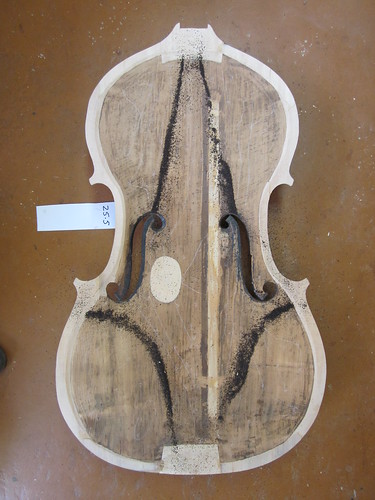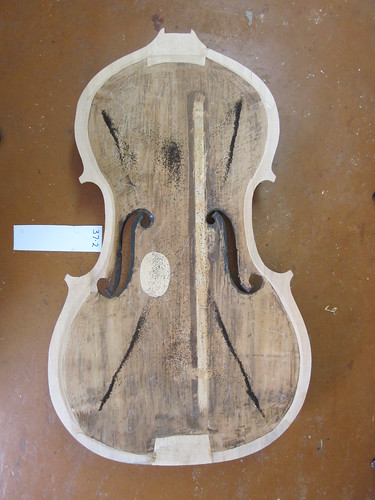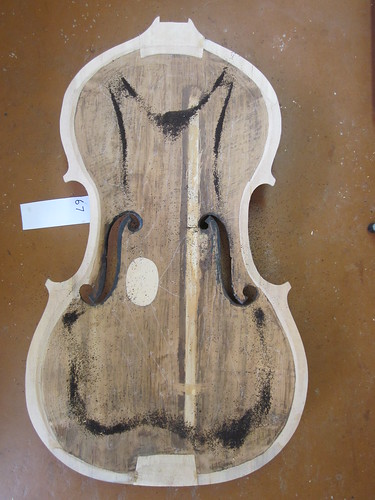
 |
|
|
|
#1
|
||||
|
||||
|
Nice jig.
Do you heat the strips first and then put them in, or apply heat while bending? It looks like they're dry, right? |
|
#2
|
||||
|
||||
|
Stick 'em in the jig, heat with the gun and bend when hot. This gets them roughly bent. Then i take 'em out of the jig, slop on the glue, add a strip of non-stick "cooking paper" and clamp the lot in the jig until the glue sets.
|
|
#3
|
||||
|
||||
|
Not much to report this weekend, except that the top is now 1663g after removal of the bass bar. The bar was therefore 245g.
I did some more hocus pocus chladni measurements on the top because I can. Have a look at this video (unfortunately we can't embed video on this site yet) to see how the first mode looks in stop-motion! http://www.youtube.com/watch?v=aHbpC_0E7wM     Last edited by Matthew Tucker; 09-26-2010 at 01:44 AM. |
|
#4
|
|||
|
|||
|
Out of ignorant curiosity, what does vibrating the top with sand in it tell you? You have my interest very piqued, and I really appreciate all the pictures and updates in this thread. I love seeing all the details and effort that go into this. Kudos.
|
|
#5
|
||||
|
||||
|
it just tells me the frequency of the resonant modes of that top. Combined with the weight, it can give a numerical value for stiffness. Sometimes it can reveal asymmetries in stiffness. But it tells me no more about the tone of the bass than other measurements such as the width of the plates. For the moment it is just another measurement to keep track of and compare with other basses, but its fun to do and looks cool.
|
|
#6
|
|||
|
|||
|
It does look cool, that is for sure. So, ideally, would all the sand be symmetrical? I see that it mostly is, except at one frequency were there is a slight variance. It is pretty incredible the different patterns it forms based on frequency of vibration. How consistent are the results? If you were to do the same test back to back, are the results identical?
Sorry for all the questions, just very curious. |
|
#7
|
||||
|
||||
|
yes same tests back to back are identical if nothing else changes. I suppose if you take the view that symmetrical plates are ideal or necessary (although there's no evidence that this is the case) then symmetrical shapes would indicate this.
My ideal is to get the tea-leaf patterns looking as much like Yosemite Sam as possible. Yosemite Sam is the holy grail of chladni enthusiasts ... I have a long way to go. |
 |
| Currently Active Users Viewing This Thread: 23 (0 members and 23 guests) | |
| Thread Tools | |
| Display Modes | |
|
|